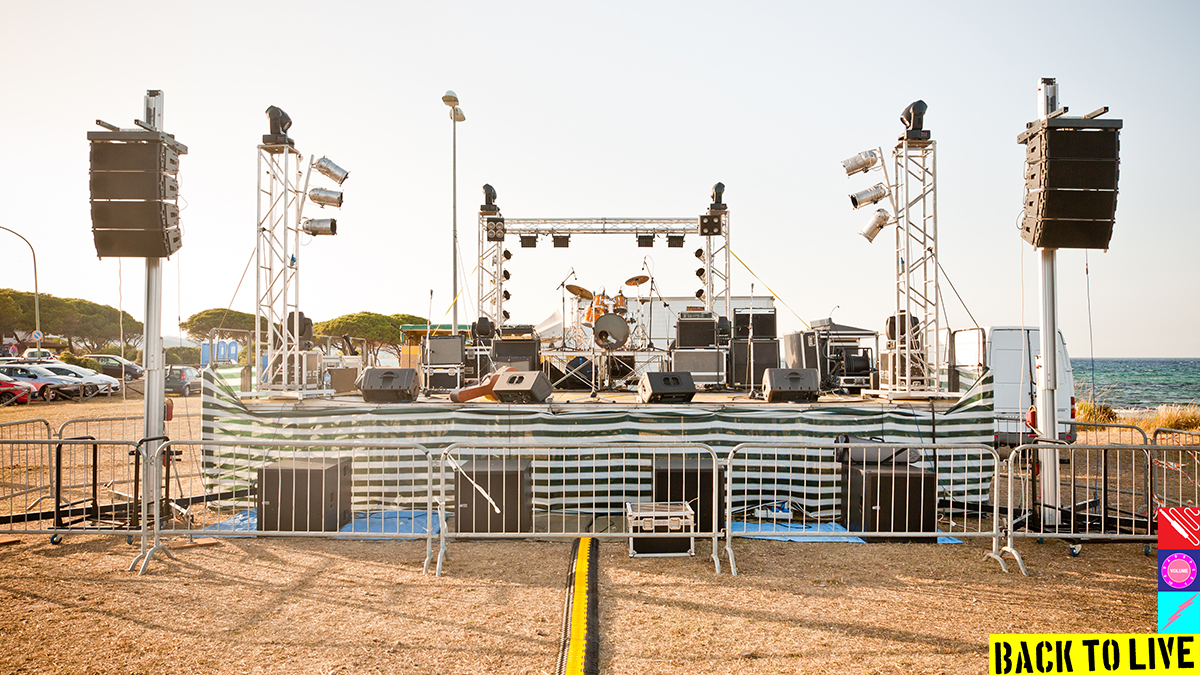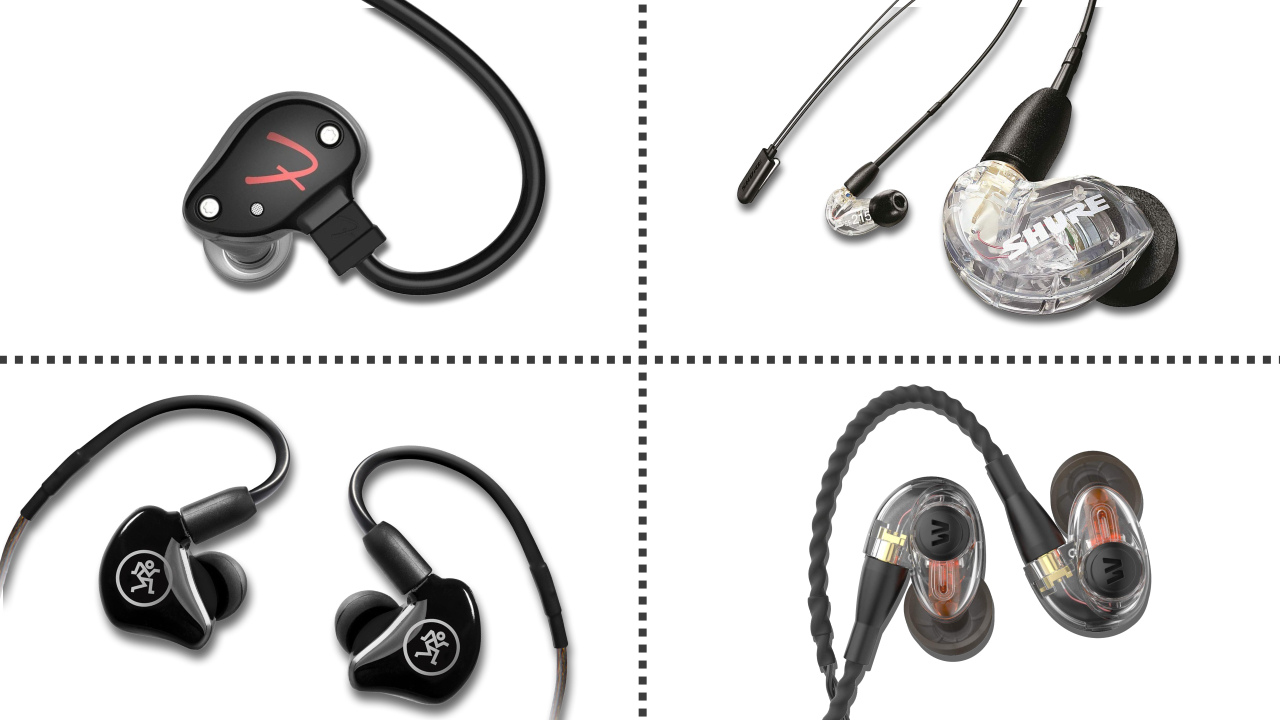Getting your monitor mix right – a guide for gigging musicians
How to nail your onstage sound so that you can concentrate on your performance

BACK TO LIVE: With society slowly beginning to re-open, and venues planning to welcome live music again, now could be the perfect time to swot up on how to make your stage performances sound as professional as possible. Getting your monitor mix right is a crucial part of this process.
We’ve all played – or been at – shows where the band members can’t seem to find that onstage sweet spot. This can lead to timing issues, vocalists missing notes, and guitarists struggling to accurately judge string bends. Put simply, if you can’t hear yourself properly when you’re up there, the odds will always be stacked against you.
Thankfully, securing a satisfactory monitor mix is perfectly achievable if you take the correct approach, and in this guide we’ll give you all the information you need.
Why is a decent monitor mix important?
Whether you’re playing a tiny pub gig or a huge arena show, getting the right monitor mix can make or break your performance. After all, if you and your fellow musicians can’t hear yourselves onstage, how can you possibly play in time or make sure your individual contributions sound the way you want them to?
A good monitor mix takes away those worries, giving musicians the freedom to express themselves, and making it much more likely that the show will be memorable for the right reasons.

How does stage monitoring work?
There are two main components involved in stage monitoring. At one end of the process is the mixer, at the other is the method of distribution – i.e. monitor wedges or in-ear monitors (IEMs).
A typical mixer will have a main output section, which feeds the front-of-house (FoH) speakers and controls what the audience hears. It should also have at least one auxiliary (aux) bus. This duplicates the output signal and sends it to a separate channel – in this case the monitor mix. While the faders on the mixer will control the levels being put out to the audience, the aux bus will take a pre-fader signal and feed it to the stage monitoring system.
Get the MusicRadar Newsletter
Want all the hottest music and gear news, reviews, deals, features and more, direct to your inbox? Sign up here.
Once the audio signal is being routed correctly, it will be played back through either specialist monitor speakers or IEMs – sometimes both. Monitor speakers are often angled (hence the name ‘wedges’) so that they can sit at the front or side of the stage, directing sound at the performers without obscuring the view of the audience. IEMs are essentially specialised earphones that block out ambient noise and provide isolation from the rest of the sound created onstage. Customised IEMs, such as the Westone models, go a step further by creating impressions of your ear canal, which can significantly block out external audio.
And that’s pretty much it. The mixer receives the audio and distributes versions of it both to the audience and the band itself. Sounds simple, right?
Potential monitor mix issues

Are they any good? Find out with our guide choosing the best budget in-ear monitors
Creating a good onstage monitor mix is not always that simple, though. No two venues/artists/engineers are the same, and there are other hurdles to overcome, too. One is microphonic feedback. This is caused when a mic captures the output of a speaker and then feeds that sound back into the speaker, creating an eternal loop. With monitor mixes pumping audio back towards the stage and, therefore, the microphones, this creates a conundrum. To combat it, engineers will avoid placing speakers and microphones too close together, and ensure that one isn’t pointing at the other. However, with multiple mics and speakers, it’s a recurring challenge.
Another thing to bear in mind is that different performers will have different requirements. Drummers, for example, might want a click track to take prominence in their mix, but for a singer this probably won’t be necessary or desirable. Bass players will usually want more drums – particularly kick and snare – to lock into and keep everything tight. Guitarists and singers will more often than not want their own sound up front so that they can ensure everything is in tune. IEMs are very useful here, as they provide the added benefit of stereo sound. You might, for example, pan the singer or guitarist to either side and keep the kick and bass central.
With so many frequencies all battling for the same space, it pays to have multiple aux sends so that each performer gets the feed that best meets their needs. While many established venues will have mixers that can create pre-fade auxiliary feeds, it’s best to check ahead.
The final – and perhaps most significant – challenge centres around the soundcheck. These usually take place in an empty venue, so don’t take into account crowd and ambient noise. People chat, shout and cheer, all of which can drown out a monitor mix that’s being played back through onstage wedges. Carrying out a soundcheck with the FoH mix reduced a touch can provide a better representation, though further tweaks during the set are not uncommon. More often than not, both the FoH and monitor mix will be carried out by the same engineer, so it pays to be nice to them!

Conclusion
When live music begins again, it will be helpful to have a better understanding of the challenges associated with onstage mix monitoring, along with some potential solutions. Work with the venue’s sound engineer to find a balance that works for you, and be sure to thank them when they get things right. The main thing to take away from this article is that what the audience hears and what the band needs to hear are two very distinct things.
Chris Corfield is a journalist with over 12 years of experience writing for some of the music world's biggest brands including Orange Amplification, MusicRadar, Guitar World, Total Guitar and Dawsons Music. Chris loves getting nerdy about everything from guitar and bass gear, to synths, microphones, DJ gear and music production hardware.










